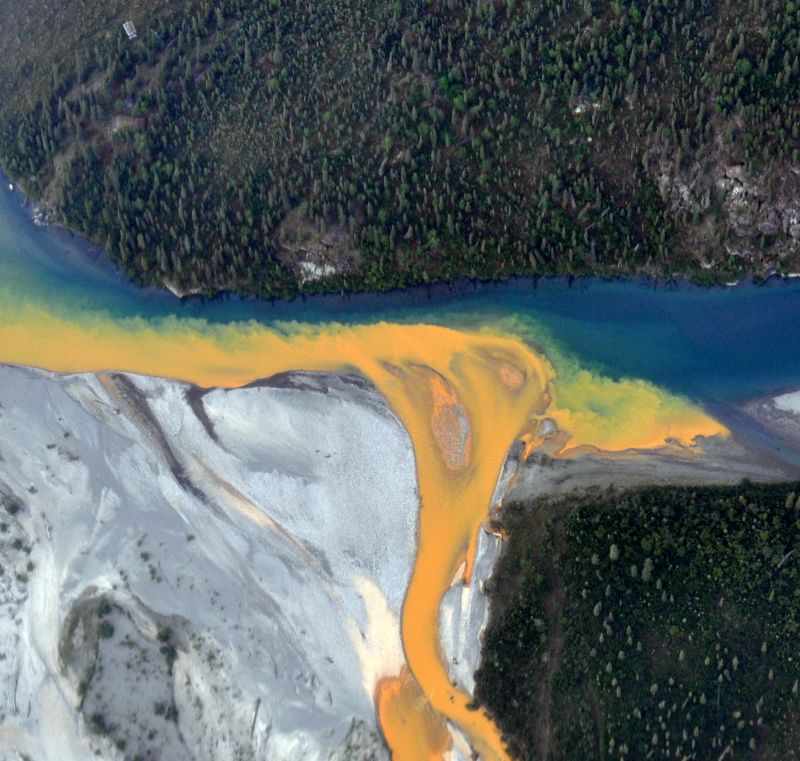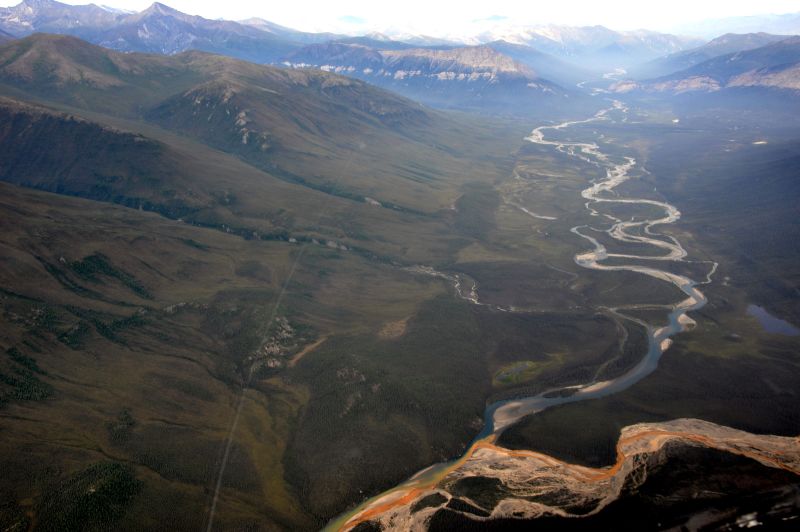
Alarming Transformation: Alaskan Rivers Showing Unexpected Hue Shift

Discover how the once pristine blue rivers of Alaska are undergoing a troubling transformation to a rusty orange hue. Learn about the startling link between climate change and the release of toxic metals from thawing permafrost, as revealed in a recent study.
Rivers and streams in Alaska are undergoing a color transformation, shifting from a pristine blue to a rusty orange hue. This change is attributed to the presence of toxic metals released by thawing permafrost, as revealed by a recent study.
The surprising discovery was made by a team of researchers from the National Park Service, the University of California at Davis, and the US Geological Survey. They conducted tests at 75 different locations along the waterways of Alaska's Brooks Range. Over the span of five to ten years, the rivers and streams in the range displayed a noticeable shift, appearing rusty, cloudy, and orange in color. This study was published in the journal Communications: Earth & Environment.
Discoloration and cloudiness in rivers and streams are caused by metals such as iron, zinc, copper, nickel, and lead. Some of these metals are toxic to the ecosystems of the water bodies. This happens as permafrost thaws, exposing minerals that have been underground for thousands of years.
According to Brett Poulin, a co-author of the study and a professor of environmental toxicology at UC Davis, this process is commonly seen in areas with a history of mining, like parts of California and Appalachia. Rivers in the continental US have been impacted for over a century due to mining activities dating back to the 1850s.
“But it’s very startling to see it when you’re on some of the most remote wilderness and you’re far from a mine source.”
An aerial view of the Kutuk River in Alaska's Gates of the Arctic National Park that looks likeorange paint spilling into the clear blue water.
An aerial view of the Kutuk River in Alaska's Gates of the Arctic National Park that looks likeorange paint spilling into the clear blue water.
Ken Hill/National Park Service
Arctic soils have organic carbon, nutrients, and metals like mercury in their permafrost. As the permafrost melts due to high temperatures, these minerals mix with the surrounding water sources.
Studies have shown that the Arctic is warming four times faster than the rest of the world.
"What we are observing is a quicker thawing of soil in that area compared to other regions," Poulin explained. "This is an unforeseen outcome of climate change."
The Thwaites Glacier in Antarctica is being eaten away from below as warm, salty water flows underneath it according to new research.
The Thwaites Glacier in Antarctica is being eaten away from below as warm, salty water flows underneath it according to new research.
NASA/Reuters
Related article
Ocean water is rushing miles underneath the ‘Doomsday Glacier’ with potentially dire impacts on sea level rise
Researchers analyzed satellite images to track the timing of color changes in various rivers and streams. According to Poulin, the most significant color changes occurred between 2017 and 2018, aligning with the warmest years on record at that time.
The discoloration in the water is causing a decline in aquatic life, which is worrying for communities that depend on these waterways for drinking and fishing.
In Alaska's Arctic rivers, there are various types of fish that are essential for subsistence, sport, and commercial fisheries. Local communities have been sharing their concerns and observations with researchers for the past seven years.
An aerial view of the Kutuk River in Alaska’s Gates of the Arctic National Park, where a portionof the water is rust-stained.
An aerial view of the Kutuk River in Alaska’s Gates of the Arctic National Park, where a portionof the water is rust-stained.
Another study revealed that Colorado's Rocky Mountains are also facing similar effects to Alaska. This study was published just a month before the researchers in Alaska shared their findings, showing how a warming climate is impacting the region.
Researchers published a study in Water Resources Research revealing higher levels of metals like sulfate, zinc, and copper in 22 mountain streams in Colorado over the last three decades. They attribute this increase to a combination of reduced streamflow and thawing frozen ground, which releases minerals from the bedrock.
Edward Burtynsky
video
Related video
Photographer captures stunning images of ‘rivers of rust’ in Canada
Research on the rise in metal and rare earth element levels in mountain rivers and streams has not only taken place in the US but also in other regions like the Chilean Andes, the European Alps, and the Pyrenees in northern Spain.
Even though some of these areas have been affected by mining activities leading to higher metal levels in water bodies, the recent spikes in concentrations prompt concerns about the ongoing influence of climate change on mountain water sources.
Researchers in Alaska will continue their study in the coming years to determine the location of the metal and mineral sources, and how aquatic and human life will be impacted.
Editor's P/S:
The toxic transformation of Alaskan rivers and streams, tainted by thawing permafrost, is a sobering reminder of the profound impact of climate change on our planet's ecosystems. The release of toxic metals poses a grave threat to aquatic life, affecting fish populations crucial for subsistence, sport, and commercial fishing. Furthermore, the discoloration of water bodies raises concerns about the availability of clean drinking water for local communities.
The study's findings underscore the urgent need for action to mitigate climate change and its devastating consequences. As the Arctic continues to warm at an alarming rate, we must prioritize research and implement strategies to protect these fragile ecosystems. The discoloration of water bodies in Alaska, Colorado, and other regions serves as a stark warning, urging us to act swiftly and decisively to address the climate crisis and its far-reaching implications for human and environmental health.
















